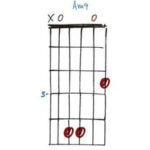For guitarists seeking a warmer, deeper tone, understanding the role of tone capacitors is crucial. The tone circuit in your guitar functions by subtly redirecting high frequencies to the ground, effectively reducing treble in your guitar’s output signal. This process, known as treble bleed, is controlled by the capacitor, and the capacitor value is key to shaping your tone.
Essentially, a capacitor’s impedance, which is how much it impedes the signal, is inversely related to both frequency and its capacitance value. In simpler terms, capacitors impede lower frequencies more than higher ones, and smaller value capacitors impede the signal more than larger ones. Think of it like this: a larger capacitor is like opening up more lanes on a highway for treble frequencies to escape to ground.
When you adjust your tone knob, you are effectively changing how much of the high-frequency signal is being shunted to ground. Therefore, using a larger capacitor in your guitar’s tone circuit will lower the frequency threshold at which this attenuation begins. This means more treble frequencies are bled off, resulting in a darker, warmer tone even with the tone knob fully open.
Consider capacitor values: a 0.1 microfarad capacitor is considered quite large for a Stratocaster, often referred to as a “dark” value and famously used in Eric Johnson’s Strat. On the other end, a 0.022 microfarad cap is on the smaller side for Strats, offering a brighter and more subtle tone control. Some players even opt for values as small as 0.01 microfarads for maximum brightness.
While other components like potentiometers (pots), such as switching to a higher value 500K pot or a no-load pot, can also influence your guitar’s tone, changing the capacitor is often the simplest and most direct way to experiment with achieving a darker guitar sound. By choosing a larger value capacitor, you can effectively darken your guitar’s inherent tone and explore a wider range of warm, mellow sounds.

